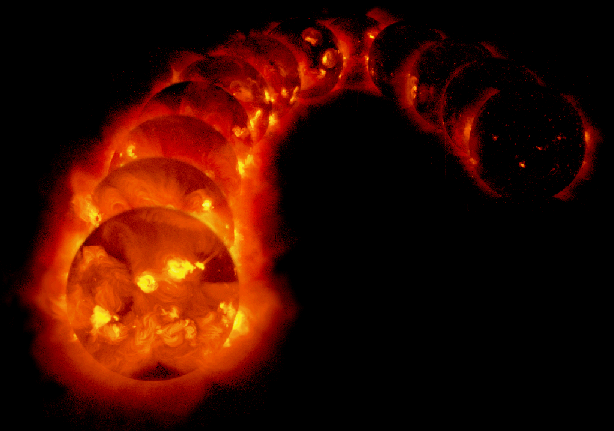![]()
This picture shows how the Sun changed between 1991 and 1995.

| ACTIVE PERIOD
- Lots of solar activity including sunspots,
flares, prominences, and coronal mass ejections. Our Sun was most recently
active during the late 1980's and early 1990's.
Photograph September 28, 1991 |
|
| QUIET PERIOD
- Few, if any sunspots are seen, the corona is difficult to observe, and
our Sun looks black when viewed with an X-ray telescope because few X-rays
are being produced. Right now, our Sun is in a relatively quiet period.
Photograph April 7, 1995 |
|
| SOLAR CYCLE - Solar activity increases and decreases over an 11 year cycle. Scientists can pretty well predict when our Sun is going to be active and when it is going to be quiet, but not always. The new active phase has only just begun -- maximum activity should happen sometime around 2000-2001. (Data from: National Geophysical Data Center) |
|

Here's a large graph showing how the Sun changes during the Solar Cycle, including pictures of the Sun between 1980 and 1989. (200 kilobytes)
One Step Back |
 |
 |
One Step Ahead |
Image Credits:
The Changing Sun: Lockheed Martin Palo
Alto Research Lab, G.L. Slater
and G.A. Linford
Active Sun, and Inactive Sun: Yohkoh Science Team
Solar Cycle:
Space Physics Group of University of Oulu, Finland